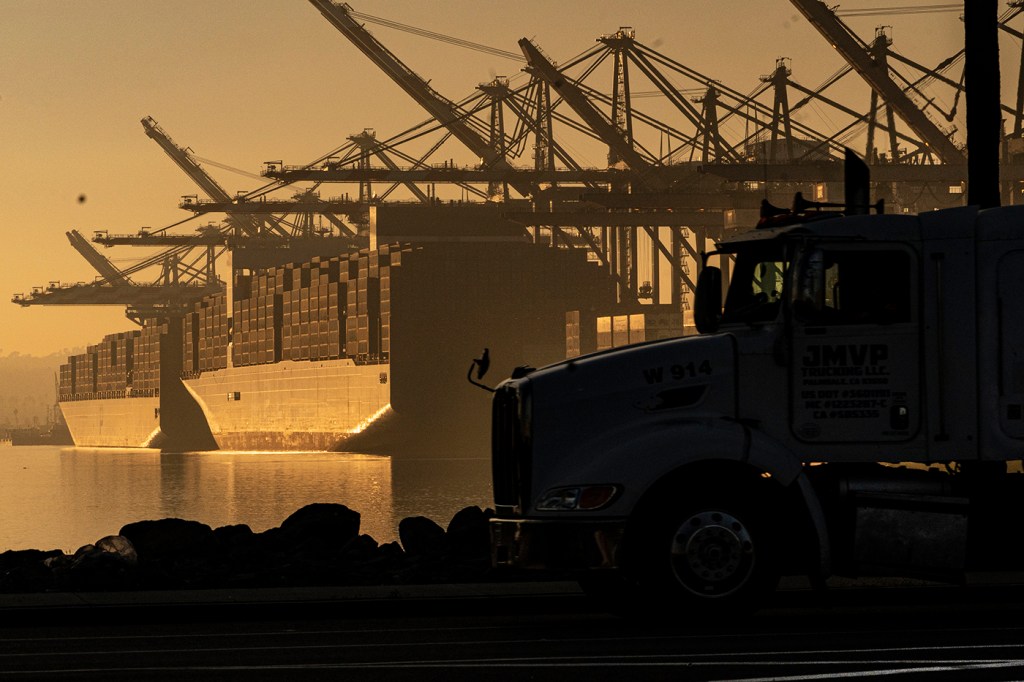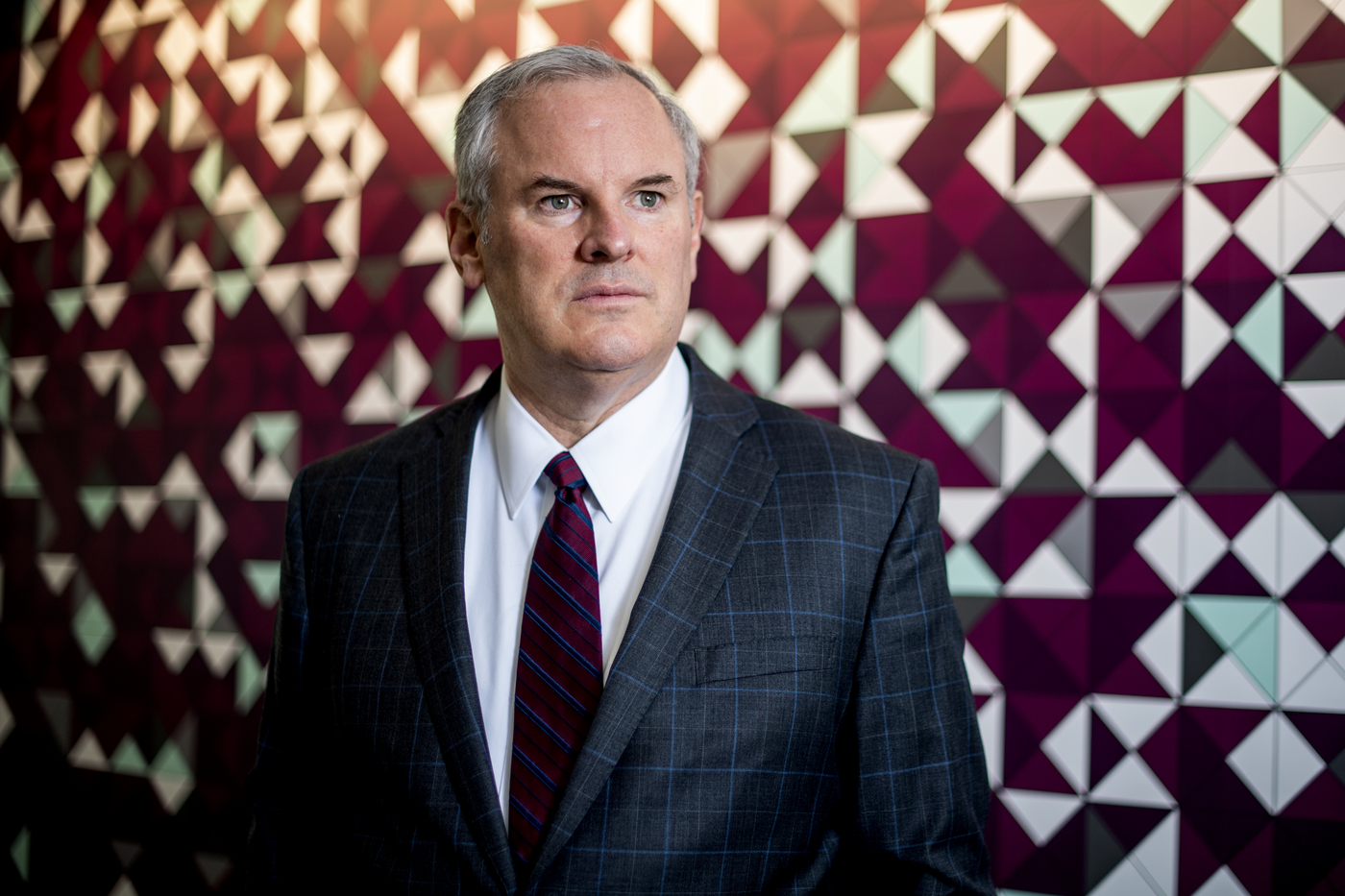Supply chains are a mess. But there’s hope on the horizon.

The supply-chain problems of 2021 will continue well into the new year while potentially contributing to inflation, according to Northeastern experts. But the issues also could yield promising solutions to reinvent supply chains by accessing the $1 trillion bipartisan infrastructure bill signed by President Joe Biden in November.
To alleviate overwhelmed California ports that can’t receive and unload the scores of cargo ships that are anchored off Long Beach and Los Angeles, the U.S. should be considering alternative forms of delivery, says Stephen Flynn, founding director of the Global Resilience Institute at Northeastern, who served as a national security and Homeland Security adviser to four presidential administrations on both sides of the aisle.

Stephen Flynn, founding director of the Global Resilience Institute. Photo by Matthew Modoono/Northeastern University
“We have to really rethink our infrastructure and transportation system to be more flexible,” says Flynn, who is discussing these issues with government leaders in Washington and New England. “With the new infrastructure/jobs act, there’s an opportunity to re-engineer some of the system so we’re not coming back and doing the same story again when the next big disruption happens.”
One possibility is to supplement the major U.S. ports with a network of smaller ports to be served by cargo boats, based on a system that developed before the 1800s.
Instead of shipping most cargo on large ships to major ports such as New York, “Why can’t we have smaller ports that are serviced by smaller ships, rather than putting lots of trucks on the road?” says Flynn. Reviving historic transportation networks such as river boats and railways also would ease pressure on the ports, he says.

Kate Ashley, associate teaching professor in supply chain and information management. Photo by Matthew Modoono/Northeastern University
Shipping became the prominent method for supporting global supply chains because the costs were so low, says Flynn. But ports and cargo companies were overwhelmed by the COVID-19 pandemic.
“In 2008, there was so much overcapacity, you could ship 40 tons of goods in a container from South China to Los Angeles for $600 to $800. They were giving away the space, basically,” Flynn says. “And now you’ve got freight rates that are in the $10,000 range with people bidding above it. We’re roughly sixfold above where we were in 2019, though the prices are starting to come down a bit now.”
Adding to the complexity are shortages of shipping containers and a two-year lag time to order the gantry cranes that hoist the containers off ships, notes Flynn. Because supply chains can no longer deliver goods on a just-in-time basis, companies are having to expand inventory and warehouse space—further increasing the costs.
“What’s really astonishing is that the management of global supply chains is very decentralized,” Flynn says. “There isn’t somebody you can turn to and say, ‘Let’s work this all out.’”
The supply-chain issues may contribute to inflation, warns Kate Ashley, an associate teaching professor in supply chain and information management. In general, when the price of an item goes up, companies respond by producing more of that item—which mitigates inflation as the price goes back down.
“But when there’s a supply-chain disruption, those market forces can’t take effect,” says Ashley. “And so there can be situations where supply-chain disruptions contribute to inflation because we can’t produce as many units of a good as are demanded, and then the price will rise.
“Companies may need to shift to a more expensive supplier for components, and then they need to charge more for the product. With fewer units being available, that can create a feedback loop.”
Ashley and Flynn say the supply-chain problems may become endemic.
“These supply chains are so complex that it can be harder than it might sound to fully understand the supply chain for your product and where issues can occur so that you can be anticipating problems and directing resources,” Ashley says. “There is still a lot of uncertainty in the current business environment, and the next big challenge for supply-chain managers may be something we’re not even aware of, yet.”
Smaller companies and developing countries are being left behind as the more powerful entities ensure delivery of the goods they need, says Flynn. He hopes that the current bottlenecks will be cleared out by summer, though progress could be slowed by additional COVID-19 outbreaks and the tensions of upcoming labor negotiations with West Coast dock workers.
“We could probably be in an OK place at the end of this,” says Flynn. “But the system will still be fragile and highly concentrated.”
For media inquiries, please contact Ed Gavaghan at e.gavaghan@northeastern.edu or 617-373-5718.





